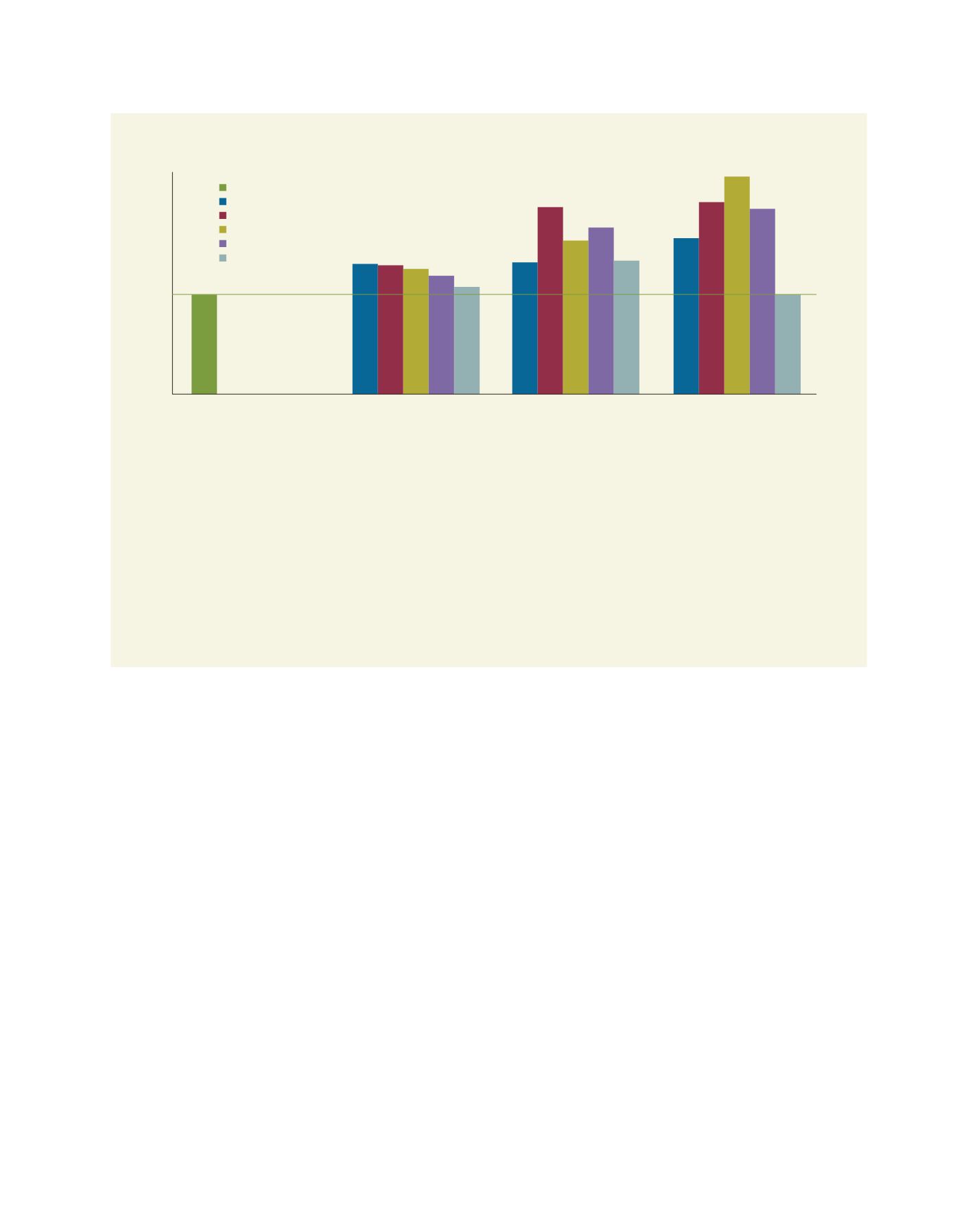

[
] 172
trials give us hope for the intensification of agriculture in
desert sandy soils through organic and inorganic amend-
ments and boosting forage production.
Soil is made up of sand, silt and clay and has many thou-
sands of soil taxa, depending upon where you are on the
world soil globe. Plants and crops depend on soil for the
supply of water and nutrients, anchorage of plants and as a
medium in which to grow. Soil is a fundamental component
for food production and in providing other soil functions
such as climate regulation, nutrient cycling, habitat for
organisms, flood regulation, a source of pharmaceuticals
and genetic resources, foundations for human infrastruc-
ture, provision of construction materials, cultural heritage,
provision of food, fibre and fuel, carbon sequestration
and water purification and soil contamination reduction.
Thus we are justified in saying that soils deliver ecosystem
services that enable life on Earth.
Over many years humans have used soils to gain great
economic rewards. However, many of the methods used
to gain those benefits are now seen as unsustainable,
because in many cases they lead to degraded land. Hence
land degradation (loss or reduction of land functions or
land uses) becomes a serious worldwide environmental
problem, especially in the drylands that occupy one-third
of the Earth’s land surface. Land degradation is induced
through natural and human activities, and accelerated due
to persistent droughts in many developing arid countries.
Irrational use of soil resources has been carried out by
powerful competing economic and social forces that have
little knowledge about the potential of soil resources and
little or no regard for the long-term care of soils. Therefore,
there is a lot riding on our capacity to understand, conserve
and manage soil resources efficiently and sustainably. The
unsustainable use of soil resource is ultimately diminish-
ing its capacity for long-term services especially producing
food. Sustainable soil management could produce up to
58 per cent more food through agricultural intensification,
so that 95 per cent of our food is directly or indirectly
produced on our soils.
1
This provides hope for meeting the
future food demand of an increasing population.
Global data shows that 33 per cent of soils are degraded due
to diverse ailments. Among the natural forces of land degra-
dation, under desert conditions wind has a major role in soil
erosion. Globally over 24 billion tons of fertile soil was lost
due to erosion in 2011, that is 3.4 tons per person per year,
costing US$70 per inhabitant, or US$419 billion worldwide.
Without fertile soils, food security, poverty alleviation and
climate change mitigation and adaptation will not be achieved.
In addition to affecting agricultural farms through nutrient
mining, drifting soil also causes environmental issues.
Sandy soil amended for agriculture intensification
A field trial was conducted on sandy soil (
Typic torripsamment
) at an
ICBA station for barley forage production. Sandy soil is dominant in
the United Arab Emirates (UAE) and other Gulf Cooperation Council
countries and is used for agricultural and landscaping activities. The
sandy soil was amended with four inorganic amendments (AustraHort:
A1, Meliorit: A2, Zeoplant pellet: A3 and Zeoplant: A4) and one
organic amendment (Compost: A5) applied at the rates of 0, 1.5, 3
and 4.5 kg/m
2
. Standard fertilizer rates were used to offset nutrient
requirements of barley crop. Treatments were triplicated in Randomized
Complete Block Design. The plot size was 2.25 m
2
(1.5m x 1.5m).
Soil amendments can boost soil resource capacity, improving the
cost-effectiveness of agricultural production.
The standard agronomic parameters were recorded and biomass
determined. The trial was irrigated at two irrigation levels (75 per cent
ETc and 100 per cent ETc). The results have shown positive effects of
amendments addition to soil on biomass production. At both irrigation
levels the addition of amendments has shown promising results in terms
of fresh biomass increase (more than double) over control treatment. At
75 per cent ETc and 100 per cent ETc (control) biomass was recorded
as 6.5 and 9 tons/ha, whereas with the addition of amendments
variable increase of biomass was recorded, the maximum being 15.5
tons/ha with the application of 4.5kg/m
2
meliorit at 75 per cent ETc
(138 per cent increase) and 19.5 tons/ha with the application of
4.5 kg/m
2
zeoplant pellet at 100 per cent ETc (117 per cent increase).
This preliminary investigation provides hope for the intensification of
agriculture in sandy soils which are inherently low in crop productivity.
Source: ICBA
Amendment doses kg/m
2
0
0
4
8
12
16
20
1.5
4.5
3
Fresh biomass (tons/ha)
Water treatment 100% ETc
A2: Meliorit
A3: Zeoplant Pellet
A4: Zeoplant
A5: Compost
A1: AustraHort
Control
L
iving
L
and
















